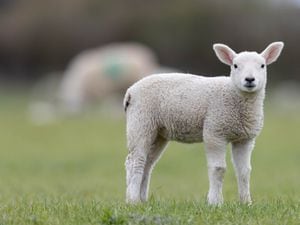Bedding sanitiser can play key role in reducing lamb mortalities
Using a bedding sanitiser as part of maintaining rigorous hygiene standards in the lambing shed could help reduce lamb mortalities.

The first 24 hours of a lamb’s life is the most crucial for survival, and the risk of mortalities is at its highest during this time.
To help combat this, Matthew Bell, business development manager at Timac Agro, advises sheep farmers incorporate the use of a bedding sanitiser into their housing management protocols at lambing time.
“For example, Actisan 360 is a disinfectant-free drying agent that can hold three times its own weight in moisture,” he says. “This is important because during lambing, bedding can get damp very quickly, which is a rapid way for a lamb to get cold.
“A lamb that’s moved into a damp pen, with its navel still wet, can be more susceptible to picking up infection.”
Damp bedding can also be a breeding ground for bacteria, which can cause diseases such as watery mouth, joint ill, septicaemia or mastitis in ewes.
However, applying a bedding sanitiser can keep the bedding dry for longer, while creating an unfavourable environment for harmful bacteria, due to its slight acidifying benefit.
Mr Bell says harmful bacteria, such as E. coli, prefer more alkaline conditions, whereas ‘good’ bacteria, such as Lactobacillus, thrive in environments that have increased acidity.
“Farmers want to try to encourage good bacteria that have probiotic properties, as this supports a lamb’s immune function and antibody levels,” he added. Therefore, providing lambs and ewes with a clean, dry environment will pay dividends in the long run.
Mr Bell says a small amount of bedding sanitiser goes a long way and adds: “You only need 50-100g per pen, or 100g/m², depending on the population density. On top of keeping bedding drier for longer, this can also help bedding to last longer and go further too.”





